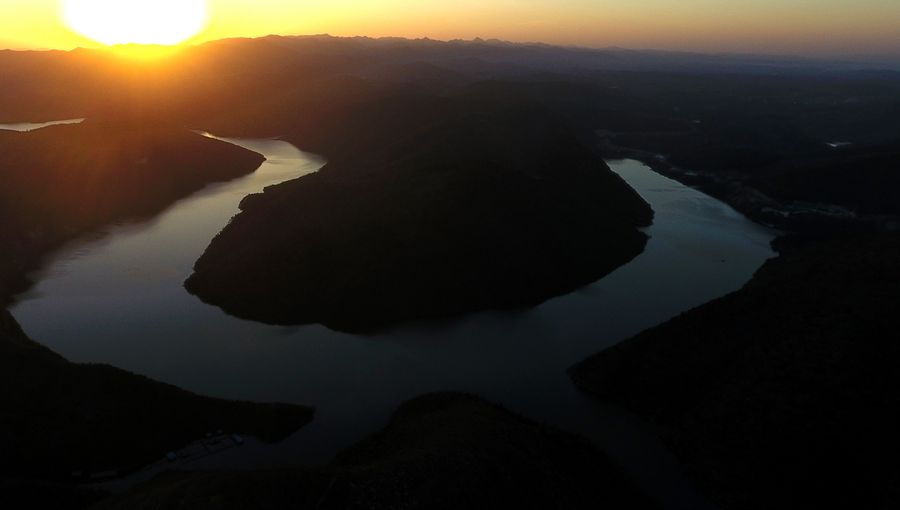
Aerial photo taken on Dec. 10, 2017 shows the scenery of Danjiangkou Reservoir in Xichuan County, central China's Henan Province. (Xinhua/Li Jianan)
BEIJING, Spet. 18 (Xinhua) -- The following are three things that you need to know about China's south-to-north water diversion project, the largest of its kind in the world.
What is it?
The south-to-north water diversion project in China, the world's largest, takes water from the country's longest river, the Yangtze, through eastern, middle and western routes to feed dry areas in the north, including capital city Beijing.
With an estimated cost of 500 billion yuan (about 70.5 billion U.S. dollars), the project started with the construction of the eastern route in 2002 and the middle route in 2003, while the western route is still in its pre-construction stage.

Aerial photo taken on Dec. 10, 2017 shows the scenery of Danjiangkou Reservoir in Xichuan County, central China's Henan Province. (Xinhua/Li Jianan)
The major parts of the eastern route are located in the provinces of Jiangsu and Shandong.
The middle route, the most attention-grabbing of the three routes due to its role in feeding water to the national capital, started supplying water in December 2014.
It carries 9.5 billion cubic meters of water each year from central China's Hubei Province to the northern regions, including the cities of Beijing and Tianjin, and provinces of Henan and Hebei.

Aerial photo taken on Dec. 10, 2017 shows the scenery of Danjiangkou Reservoir in Xichuan County, central China's Henan Province. (Xinhua/Feng Dapeng)
Why is it a feat?
The diversion project now provides 70 percent of Beijing's water supply. By 2050, as many as 440 million people could benefit from the diversion of 44.8 billion cubic meters of water each year.
The project also caters to household, industrial and agricultural demand, benefiting more than 100 counties and regions. Up to 600,000 jobs are estimated to be created.

Photo taken on Dec. 27, 2014 shows water flowing after the opening of a sluice gate of the middle route of the south-to-north water diversion project in Beijing, capital of China. (Xinhua/Yin Gang)
Chinese President Xi Jinping described the project as important strategic infrastructure to optimize water resources, boost sustainable economic and social development, and improve people's livelihoods.
Why was it built?
China's northern region has long suffered from water shortage, leading to groundwater overexploitation and river water shrinking, especially in Hebei Province, a drinking-water supplier for neighboring Beijing.

Aerial photo taken on Dec. 1, 2016 shows the Shahe aqueduct of the middle route of China's south-to-north water diversion project, central China's Henan Province. (Xinhua/Li Bo)
In October 1952, the idea of diverting water from the resource-abundant south to the north was first envisioned by China's late chairman Mao Zedong.
On June 5, 2000, after decades of research and discussion, the project was set to include three routes -- the eastern, the middle and the western -- to take water from the Yangtze River. And it was officially approved by the State Council on Dec. 23, 2002.■



